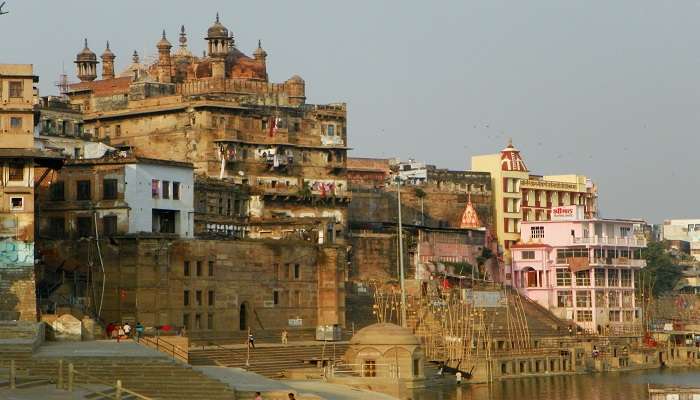Panchganga Ghat Is The Place Where Five Sacred Rivers Unite
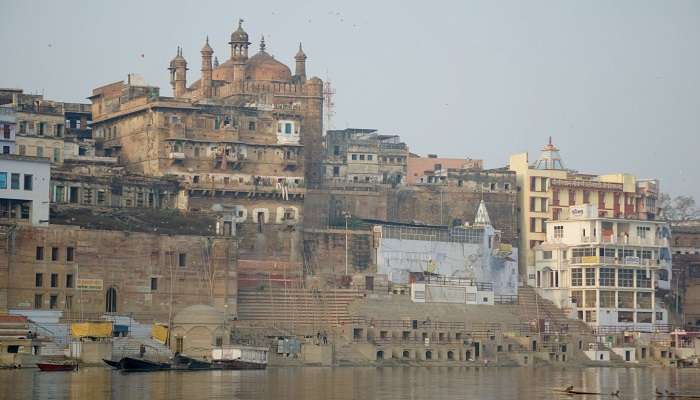
Panchganga Ghat is one of the most significant Ghats of Varanasi and it also has its own importance out of all the Ghats of the Ganges. Located on the banks of river Ganga, Panchganga Ghat is famous for the fact that it has great religious, cultural, as well as historical significance and thus people from different fields of interest visit this place right from pilgrims to tourists and history lovers. This blog delves into the rich tapestry of Panchganga Ghat through the history and religious customs associated with this place, coupled with travel advice for those who would wish to undertake a Panchganga Ghat tour.
Panchganga Ghat In Varanasi

Panchganga Ghat holds historical importance and is well-known as one of the famous ghats of Varanasi. The roots of the ghats can be traced back to the historical period of the 11th century and are described in the “Kashi Khand” from Skand Puran. This text shows that Panchganga Ghat is the second most prominent ghat after Dashashwamedh Ghat. The place was known as Bindumadhav Ghat in the Gahadavala dynasty period of the 11th and 12th centuries where royal families preferred the Panchganga Ghat instead of the Dashashwamedh Ghat. The ghat is called Panchganga because it is believed to be built at the confluence of five holy rivers: Ganga, Saraswati, Khalu, Dhutpapa, Yamuna and Kirana. Today, the Ganga is the only river on the plain that is quite visible; the other five or four are said to have merged into Mother Earth. Another interesting fact is that Panchganga Ghat was used as the teaching place of Vedant Ramanand who was the guru of one of the most famous saints in India, Kabir. It is also said that the great saint poet Tulsidas has written ‘Vinay Patrika’ in this ghat.
This ghat is famous for the Alamgir Mosque built by Mughal emperor Aurangzeb on the ruins of Bindu Madhav Temple, which was constructed by Maratha Beni Madhav Rao Scindia in the 17th century AD. This mosque is also known as Beni Madhav-ka-Darera which is a beautiful blend of Hindu Persian architecture embellished with carved pillars and domes, depicting beautiful artworks of medieval India.
Must Read: Resorts In Varanasi
Aarti And Religious Significance 
Panchganga Ghat has a sound historical and mythological importance and is a popular spot for devotees and tourists to witness the early morning Ganga Aarti. This emotional ‘arati’ is performed to praise the godly Ganga and throws light on the divine purpose of the ghat. While performing the Aarti, the priests come to the central platform and perform several, very elaborate rituals which include oil lamps, recitations and offerings which make it completely engrossing as well as spiritually fulfilling.
Religious activities at Panchganga Ghat are heightened during the months of April-May which is known as Vaishakh and October-November which is known as Kartik as these two months happen to be festival months. Men and women especially engage in sacred immersion and certain ceremonies are performed during Kartik month, lights or jewels are lit in memory of ancestors. Such practices portray the extent of devotion and the religious importance that the priests embrace at Panchganga Ghat.
Festivals At Panchganga Ghat
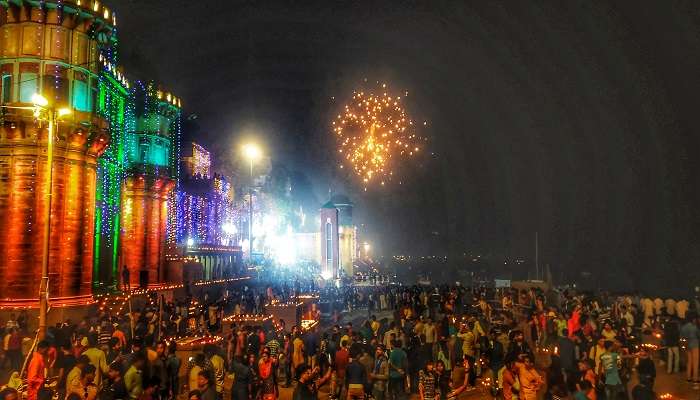
During the Hindu festivals, the ghat is in full spirits with numerous devotees. Some of the prominent festivals celebrated here include:
Dev Deepawali: This occasion falls fifteen days after Diwali and during this festival, thousands of lamps or diyas are lit along the ghat for a gorgeous view.
Ganga Dussehra: This festival is celebrated to commemorate the advent of the Goddess Ganges to the earth, and it is believed that people find solace in taking a dip in the river.
Kartik Purnima: According to the Hindu calendar, this ghat is particularly associated with the full moon night of the Kartik month and festivities, which include lighting lamps and performing devotee rituals that are dedicated to Lord Vishnu.
Suggested Read: Picnic Spots Near Varanasi
Things To Do At Panchganga Ghat

There are a number of activities that can be done at the Panchganga Ghat to provide visitors with spiritual, socio-cultural, and aesthetic experiences. Here’s a detailed look at what you can do at this historically and religiously significant place:
1. Boat Rides
Another common thing that tourists visiting Panchganga Ghat can see and do is opting for a boat ride on the Ganges.
- Sunrise and Sunset Cruises: Every traveller would love to capture the scene of the sun setting over the Ganges. Boat rides in the early morning give a sort of ethereal look and feel as the city gradually stirs up and the ghats become active. While the sunrise offers a serene view, the sunset offers a mesmerizing view of the ghats as the entire area lights up in the orange hues of the golden sun.
- Ganga Aarti from the River: Boating in the evening to see the Ganga Aarti is something which could easily become an unforgettable memory. The chants, the lighting of lamps, and the overall feel of the riverside is different from what one would experience at the ghat.
- Photography Opportunities: Boat rides present wonderful photo-shooting moments in one of the most natural settings you can think of. It is the best angle to capture beautiful moments of the ghats, temples and people going about their activities at the riverfront.
2. Temple Visits
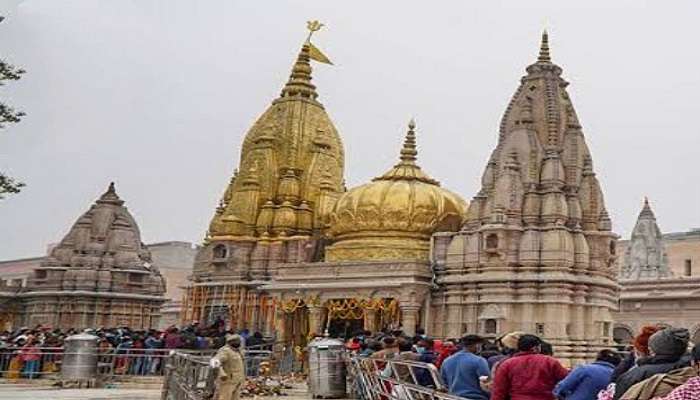
Panchganga Ghat is home to several religious monuments that are significant both spiritually and historically.
-
- Bindu Madhav Temple: This temple is dedicated to Lord Vishnu and is one of the ancient temples found in Varanasi. It is a must-go place because of its great architecture and its quiet environment. People visit this place in order to worship and to get blessings.
- Alamgir Mosque: This mosque was constructed by Mughal Emperor Aurangzeb on the tomb of Beni Madhav and this mosque also known as Beni Madhav ka Darera, was built on the ruins of the temple. It gives an architectural tour of the structure in Hindu and Mughal architectural styles and historical turning points in the region.
Suggested Read: Alambagh In Lucknow
3. Witness Rituals and Ceremonies
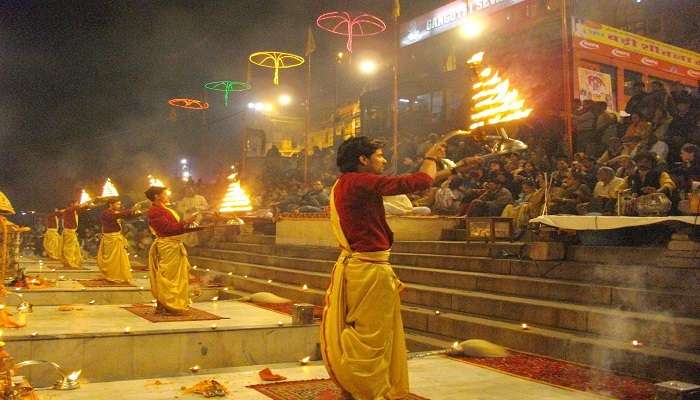
Panchganga Ghat is a hub of religious activity, and witnessing the rituals and ceremonies performed here can be deeply enriching.
-
- Daily Rituals: Daily rituals include morning and evening Aartis, prayers offered to the river and immediate personal rites for the devotees, by the priests.
- Special Pujas: Additional rituals such as special pujas are performed on auspicious days and other festive occasions. Attending these can help one gain an understanding of Hindu customs and practices.
4. Engage In Yoga And Meditation
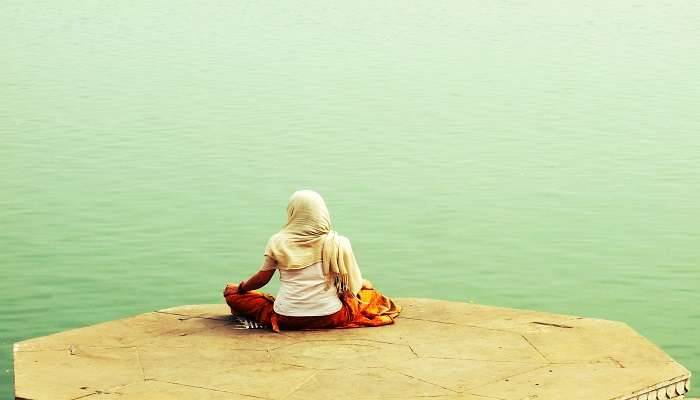
Varanasi is a renowned centre for yoga and meditation, and Panchganga Ghat is no exception.
-
- Morning Yoga Sessions: Most of the yoga trainers conduct their classes on the ghats at the break of dawn. It is spiritually refreshing to practice yoga by the riverside and listen to the sound of the Ganges flowing.
- Meditation: The quiet atmosphere of the ghat makes it an ideal place for meditation. Tourists can attend a guided yoga and meditation session or they can individually do it for a stress-free soul.
Suggested Read: Kashi Vishwanath Mandir
5. Explore Local Cuisine
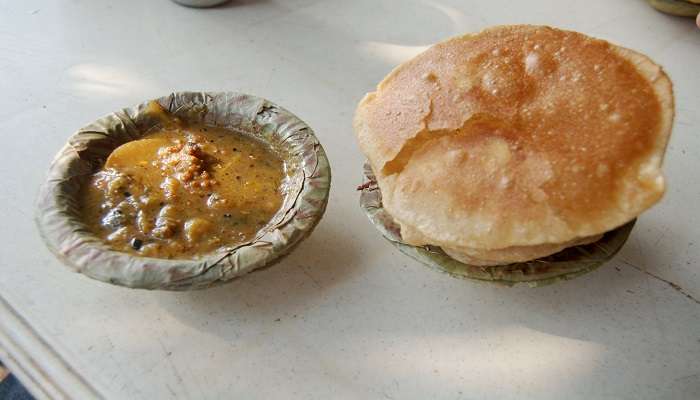
The area around Panchganga Ghat is dotted with eateries and street food vendors offering delicious local cuisine.
-
- Street Food: One can taste spicy rasiya kachori, jalebi, or chaat, which can be found in small eateries near the ghat. The flavours and aromas of these dishes are completely unique and are some of the best finger-licking street foods in Varanasi.
- Lassi Shops: Enjoy a glass of lassi which is a sweet and creamy yogurt-based drink, and one of the specialities of Varanasi.
6. Shopping for Souvenirs
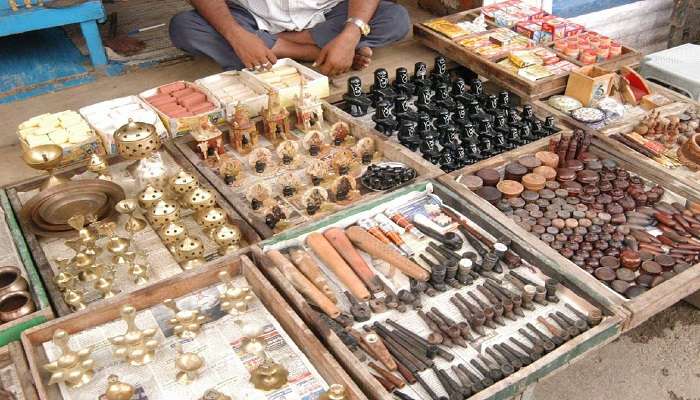
Visitors can explore the local markets around the ghat for unique souvenirs and traditional handmade items.
- Silk Sarees: Varanasi is particularly well known for its Banarasi silk sarees. Various shops near the ghat sell beautiful and well-designed sarees of this kind.
- Handicrafts: Traditional handicrafts may include brassware production, wooden toys, and a variety of items that you can purchase as souvenirs.
7. Attend Cultural Performances
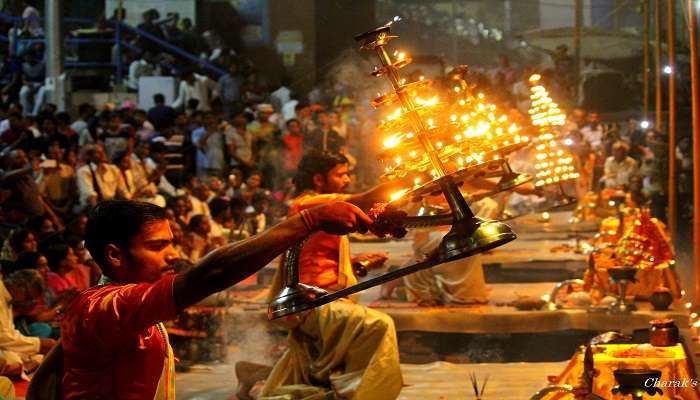
Varanasi is a cultural hub, and Panchganga Ghat often hosts various cultural performances:
-
- Classical Music and Dance: Look out for live performances of classical Indian music and dance, which are frequently organized on or near the ghats.
- Festivals: During festivals like Dev Deepawali and Kartik Purnima, the ghat becomes a vibrant stage for cultural events, including folk music, dance, and drama.
Suggested Read: Nightlife In Varanasi
8. Engage with Local Artists
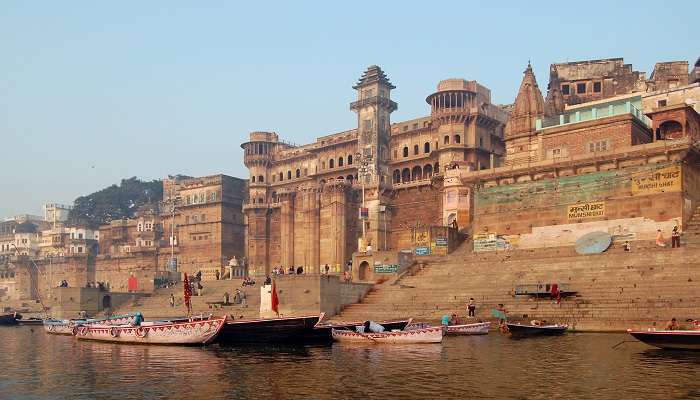
Varanasi is home to many talented artists and craftsmen. Engaging with them can be a rewarding experience:
- Art Workshops: Some local artists offer workshops on traditional painting, pottery, and other crafts. Participating in these workshops can provide a hands-on understanding of the local art forms.
- Buy Local Art: Purchasing artwork directly from the artists supports the local economy and provides you with unique pieces to take back home.
Accommodations Near Panchganga Ghat
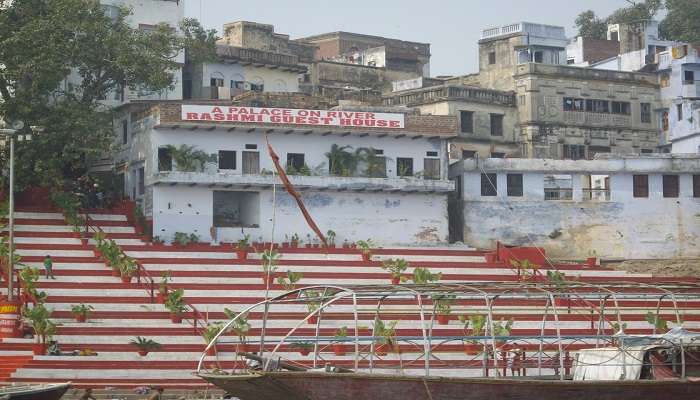
The accommodation in Varanasi can be in the form of luxury hotels, budget hotels or a guest house. Some notable options near Panchganga Ghat include:
1. Brij Rama Palace: A 5-star luxury heritage hotel which is located near the ghat and provides a royal and modern comfort experience.
2. Palace on the Ganges: This boutique hotel has affordable accommodations with a picturesque view of the river.
3. Ganpati Guest House: A low-cost establishment with a simple interior and a convenient location, close to the ghat.
4. Suryauday Haveli: A nice hotel with a design based on local architectural techniques but equipped with all the amenities of the modern age.
Suggested Read: Kashi Vishwanath Temple
How To Reach Panchganga Ghat

Varanasi is well-connected by air, rail, and road, making it accessible for travellers.
By Air: The nearest airport is Lal Bahadur Shastri International Airport about 25 kilometers from Panchganga Ghat. Flights are available between Varanasi and various other Indian cities frequently.
By Train: The two major railway stations are Varanasi Junction and Mughal Sarai Junction, which connect the city with trains from different parts of the country.
By Road: National highway connects Varanasi and buses and taxis are available from different cities.
After arriving in Varanasi, travellers can easily get a rickshaw or auto-rickshaw or take a boat to visit the Panchganga Ghat.
Tips for Travelers
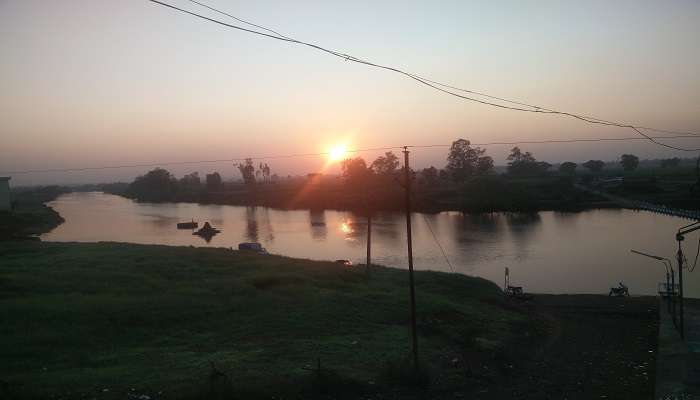
- Dress Modestly: Given the religious nature of the ghat, it’s advisable to dress modestly.
- Respect Local Customs: Participate in rituals respectfully and seek permission before photographing locals.
- Stay Hydrated: The weather can be hot and humid, so carry water to stay hydrated.
- Beware of Scams: Be cautious of scammers offering unsolicited services or demanding donations. Take care of your belongings as the place can be crowded.
Further Read: Shopping In Varanasi
A visit to The Panchganga Ghat when on a trip to Varanasi is mandatory. Panchganga Ghat is not only a geographical location, it is more of a feeling that encapsulates the spirit of Varanasi. Due to its historical, religious, and cultural background, it has become one of the most recommended places for anyone interested in visiting the holy land. Regardless of whether travellers are looking for spiritual, cultural or historical experiences, Panchganga Ghat provides nothing but an enriching voyage into the historical and spiritual heritage of India.
For our editorial codes of conduct and copyright disclaimer, please click here.
Cover Image Credit: Scott Dexter for Wikimedia Commons
Frequently Asked Questions About Panchganga Ghat
What are the main religious activities at Panchganga Ghat?
The usual religious practice witnessed at this place is the ‘Ganga Aarti’ that happens at dawn where oil lamps are lit, chanting of mantras are made and offerings are made to the flowing river. There are also shrine rooms with places for meditation and prayers. These rooms have shivalings and deities on the walls.
What are the best accommodations near Panchganga Ghat?
Some of the well-known hotels situated near Panchganga Ghat are Brij Rama Palace which is a heritage hotel famous for providing royal-like comforts, Palace on Ganges which is a picturesque budget hotel offering splendid river view rooms, Ganpati Guest House which is a budget accommodation and Suryauday Haveli that is a blend of traditional architecture and comfort.
How can I reach Panchganga Ghat?
The nearest airport is Lal Bahadur Shastri International Airport, located nearly 25 kilometres away from the ghat. Through rail, there are two major rail stations; Varanasi Junction and Mughal Sarai Junction that communicate with major cities within the country. Varanasi is connected by National Highways, one can have direct bus or taxi service from all the neighbouring states. Public transportation in Varanasi is readily available and affordable
What are some must-do activities at Panchganga Ghat?
As for the recommendations for tourist activities, tourists are encouraged to go on boat rides which are available early in the morning and during the evening, visit Bindu Madhav Temple and Alamgir Mosque, try yoga and meditation, taste popular food and drink, purchase Banarasi sarees and handicrafts, watch local performances, and meet artists through workshops.
What travel tips should I keep in mind when visiting Panchganga Ghat?
It is recommended to dress conservatively when in Panchganga Ghat due to the sensitivity of the area from religious and ethical perspectives. Regarding customs, one should not interfere with any of the rituals performed and should never take photographs of the locals without permission. It is also extremely hot and humid here so make sure to stay hydrated. Moreover, always be keen on your properties while moving in crowded spots.
People Also Read:
Places To Visit In Varanasi Homestays In Varanasi Nightlife In Varanasi

With a passion for exploring and travelling to the roads long forgotten, experience the world through enthralling stories and adventures. Join me as I share my experiences at some of the world’s most popular tourist destinations and quench that pestering curiosity with something exciting!
